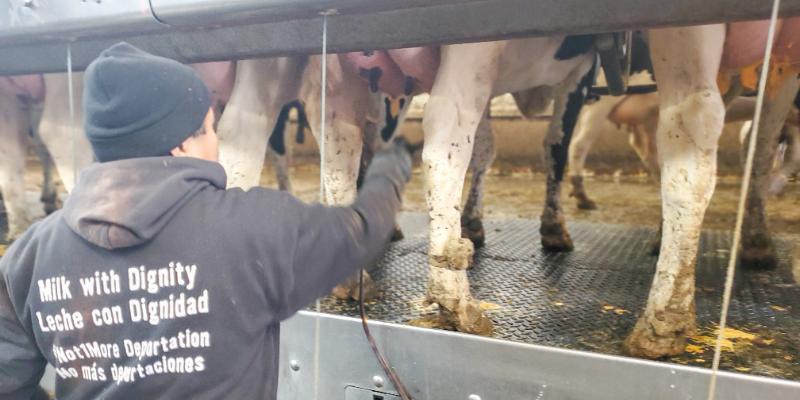-
May 9, 2023

- • Featured • Announcements
From Cow to Cup: a breakdown of dairy product processing.
On the average dairy farm in NY state, 172 cows are milked three times a day, each producing an average of 10 gallons! After the milk has been harvested from the cows, it is quickly cooled and stored in a stainless-steel tank called a bulk tank. A refrigerated truck picks up the milk daily or every other day, depending on the size of the herd.
Before being loaded onto the milk truck, fluid milk gets tested for various things, including bacteria and antibiotic residue. If the milk fails these tests and does not meet the milk quality standards set by the United States Department of Agriculture, (USDA) it is not loaded, and the farm is responsible for discarding it. After the milk gets the “green light” to be loaded, it flows into an insulated stainless-steel vat that keeps it cold while transporting.
Once the milk arrives at the processing plant, it is inspected again. Although the likelihood is slim to none, this ensures that nothing contaminated the milk and that it stayed at the right temperature while in transit. Once the fluid, raw milk is unloaded at the plant, it is processed. Milk is such a versatile product – it can be made into so many delicious products, including flavored milks, cheeses, yogurt, ice cream, and sour cream! (Fun Fact: NY ranks 1st in the nation for Sour Cream production!)
Fluid milk, skim, 1%, 2%, and whole all follow these processing steps:
- Raw milk is loaded into vertical silos for short-term storage.
- The milk is pasteurized. Pasteurization is the process of heating the milk up to kill potentially harmful pathogens. Pasteurization improves food safety.
- After the milk is pasteurized, it is spun in a large centrifuge. This process separates the cream from the skim milk.
- From this point, the skim milk and cream are recombined in specific ratios depending on the end product. For example, if the desired product is whole milk, 3.25% cream or milk fat is added back to the skim milk. This process is known as standardization.
- Milk will naturally separate into skim and cream if not for the next processing step, homogenization. This process forces the milk through a strainer with extremely small openings. This breaks up fat globules so they will not recombine and form a cream layer.
Now, the milk is ready to be chilled and delivered to local grocery stores for you to buy. The entire process of getting fluid milk from the cows on the farm to your stores takes less than 48 hours - that is true freshness!!
